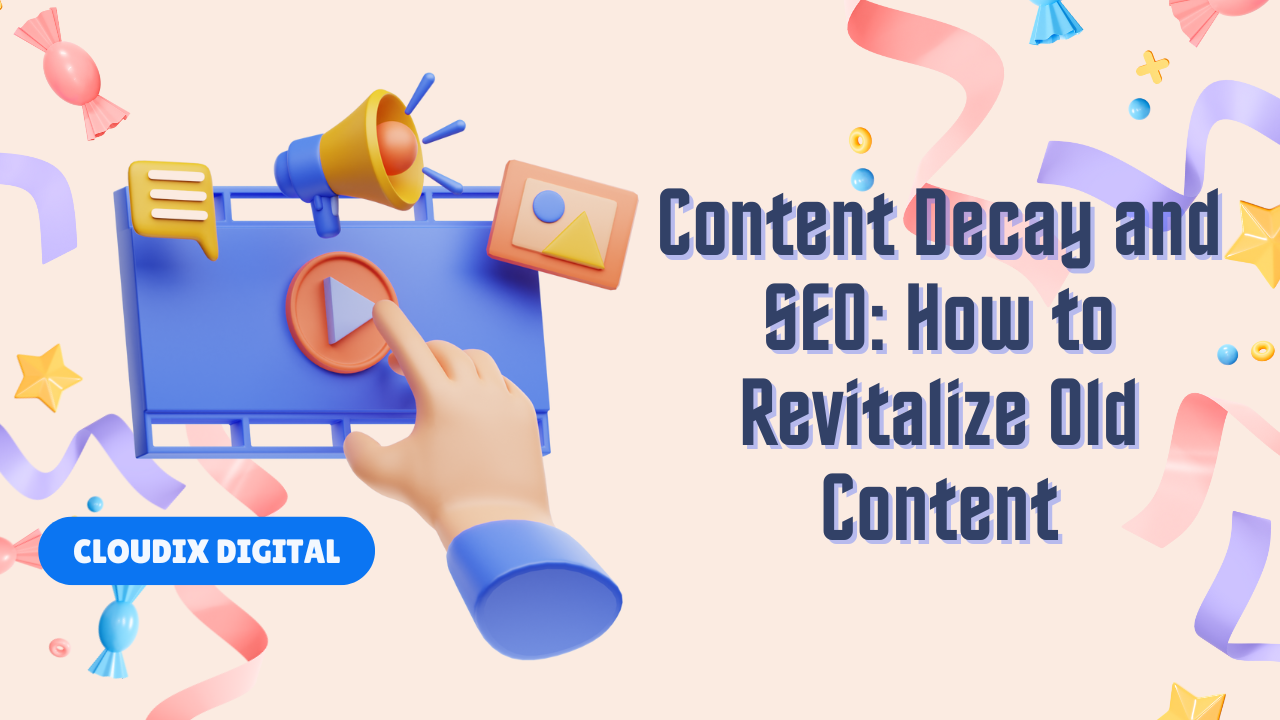What is Content Decay?
Content decay refers to the gradual decline in organic traffic and search rankings for older blog posts, web pages, or other online content. Even high-performing pages can lose visibility over time due to outdated information, changes in search algorithms, or new competitors publishing fresher content.
Think of it as digital aging—without regular updates, your once-thriving content can fall into obscurity.

Why Content Decay Matters for SEO
Search engines like Google prioritize relevance, freshness, and accuracy. If your content becomes outdated or less engaging compared to newer alternatives, you risk:
- Drop in rankings
- Lower click-through rates (CTR)
- Decreased user engagement
- Missed conversion opportunities
At Cloudix Digital, we often find that updating just 20% of a decaying page can result in a 50%+ traffic recovery within weeks.
Signs Your Content Is Decaying
Not sure if your content is suffering from decay? Look out for:
- A steady decline in page traffic over 3–6 months
- Reduced keyword rankings, especially for previously high-ranking keywords
- Increased bounce rates or shorter time-on-page
- Diminished social shares or backlinks
- Content that feels dated (e.g., old statistics, discontinued tools, obsolete trends)
How to Identify Decaying Content
1. Use Google Search Console
Check the Performance report and filter by pages. Look for those with declining impressions or clicks.
2. Use Tools Like Ahrefs or SEMrush
Analyze historical keyword data and traffic trends to spot pages losing their rankings.
3. Audit Content Regularly
Schedule quarterly or biannual content audits to assess relevance and SEO performance.

Strategies to Revitalize Old Content
✅ 1. Update Outdated Information
Replace obsolete stats, outdated screenshots, or old tools. Google rewards content that reflects the latest trends and facts.
✅ 2. Refresh Keywords
Use keyword research tools to find new variations, long-tail keywords, or search intents that have emerged since the content was first published.
✅ 3. Improve On-Page SEO
- Optimize title tags and meta descriptions
- Add headers (H2, H3) with updated keywords
- Enhance internal linking
- Optimize image alt text and compress files for speed
✅ 4. Add New Sections or Expand the Content
Are there FAQs, new subtopics, or reader questions you can address? Expand the content to make it more comprehensive.
✅ 5. Upgrade Visuals and Formatting
- Embed infographics or updated visuals
- Use bullet points, short paragraphs, and strong subheadings
- Make the content mobile-friendly
✅ 6. Republish and Promote
After updating, change the publish date, and promote it like new. Share via newsletters, social media, or internal linking to give it a fresh boost.
Pro Tips from Cloudix Digital
- Don’t delete old content blindly—even older posts can drive backlinks and residual traffic.
- Track your changes with annotations in Google Analytics or a content update log.
- Consider 301 redirects for posts that are merged or replaced entirely.
- Use structured data to enhance visibility in search results (rich snippets, FAQs, etc.)
Conclusion: Make Old Content Work Smarter
Revitalizing old content is one of the highest ROI activities in SEO. Instead of constantly churning out new blogs, leverage what you already have. A smart content update strategy helps you win back rankings, re-engage audiences, and stay competitive in a fast-moving digital landscape.
At Cloudix Digital, we specialize in SEO strategies that don’t just generate traffic—they drive growth. Contact us today if you’d like a full content audit or SEO refresh for your brand.
Need help reviving old content?
Let our SEO experts at Cloudix Digital bring your content back to life. 🚀





